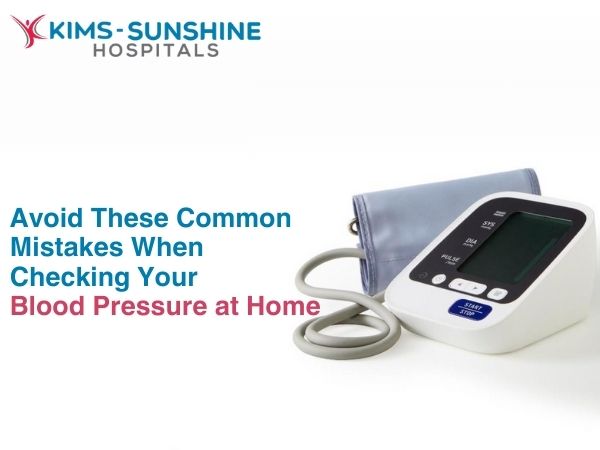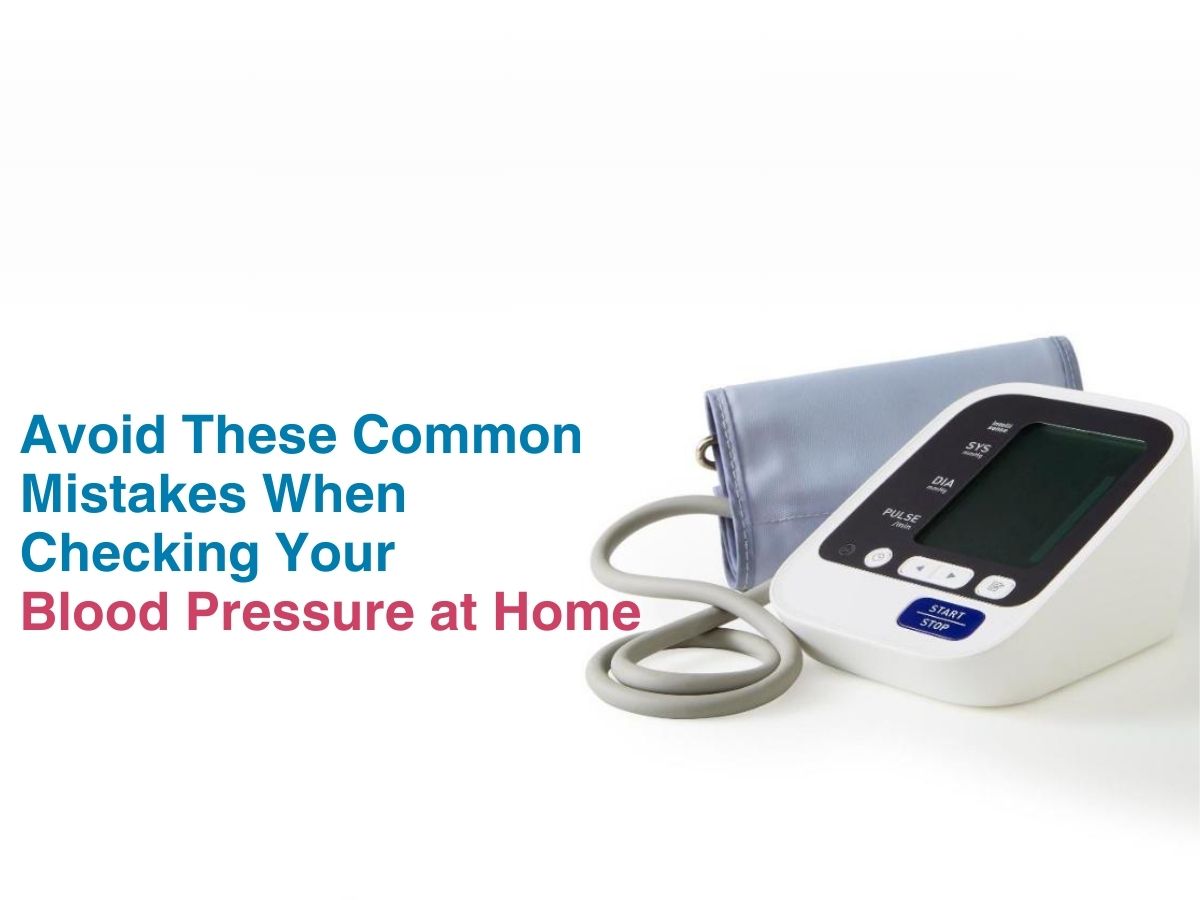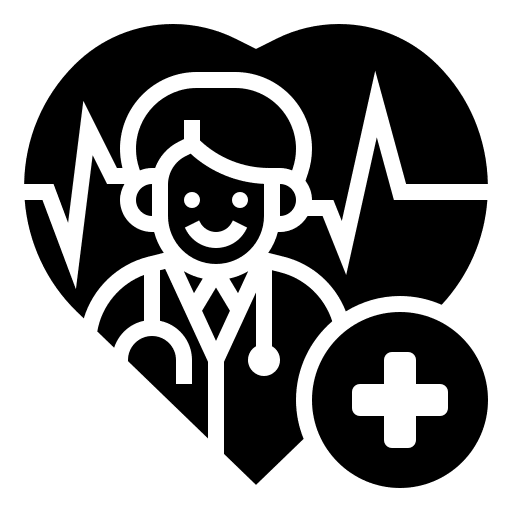
Avoid These Common Mistakes When Checking Your Blood Pressure at Home
 Blood pressure is normally measured using a sphygmomanometer – where an arm cuff gradually tightens to cut off blood supply. The cuff is then loosened – which is when blood flow begins to return. The pressure at which blood flows after loosening the cuff is what needs to be noted down. Blood pressure readings are made of 2 parts- systolic and diastolic pressure- when the heart pumps blood and relaxes respectively. A normal value is said to be below 135/85 mm/Hg, though many doctors still insist on 120/80. Digital monitors are super easy to use and very efficient. But they may not always give you accurate readings. Hypertension is an easily manageable condition and one of the ways you can do that- is by measuring blood pressure every day and taking any medications regularly, if prescribed. Let us learn how you can get accurate readings, every time you decide to check your blood pressure.
Blood pressure is normally measured using a sphygmomanometer – where an arm cuff gradually tightens to cut off blood supply. The cuff is then loosened – which is when blood flow begins to return. The pressure at which blood flows after loosening the cuff is what needs to be noted down. Blood pressure readings are made of 2 parts- systolic and diastolic pressure- when the heart pumps blood and relaxes respectively. A normal value is said to be below 135/85 mm/Hg, though many doctors still insist on 120/80. Digital monitors are super easy to use and very efficient. But they may not always give you accurate readings. Hypertension is an easily manageable condition and one of the ways you can do that- is by measuring blood pressure every day and taking any medications regularly, if prescribed. Let us learn how you can get accurate readings, every time you decide to check your blood pressure.
Best Practices For Checking Blood Pressure Yourself
The position you sit in to how well the cuff fits you- there are many factors that can dictate how accurate your readings can be. So, let us look at some common parameters to watch out for-
- You should get the right kind of monitor- which may be manual or digital. Alos, check to see if the cuff provided fits you well. If it fits poorly, then you may get wrong readings.
- You should sit straight in a chair, with your feet on the ground.
- You should ALWAYS sit still for some time before you decide to take your readings. This is to allow your body to get back to the resting state.
- The same applies if you drink coffee, have food, finish a workout or have to pee- all of which can influence your blood pressure values.
These measures above are some things to avoid when measuring blood pressure.
As for what you should do-
- Put the cuff above the elbow and don’t wind it too tight- you should be able to slip a couple fingers through to the other side.
- Your upper arm should be parallel to the heart- so rest your elbow on a table.
- You should take the values in the morning and evening. This is important as your values keep changing in a day and drastic changes could mean something wrong.
The brachial artery in your upper left arm is normally used as it is closer to the surface of the skin, though doctors may ask you to take values on both sides. Values can change on both sides slightly, while a significant and consistent difference between both can mean you will need to get checked by a doctor soon. It may be undiagnosed hypertension. You may also be asked to wear a pressure monitoring cuff for a whole week or longer, without a break- and this is called ambulatory monitoring.
You should try to take 3 sets of readings, 2 minutes apart and the average should give you a pretty good estimate. This is because you may get a high reading once and begin to stress out about it.
Can Stress Affect Blood Pressure Readings At Home
Stress can be any trigger that is unusual to you and cause high readings if taken during the episode. This is because higher levels of cortisol produced during that time can cause a spike in blood pressure. Prolonged exposure to high stress situations can cause people to develop anxiety related disorders in severe cases.
Conclusion
We have given you a step-by-step guide for home blood pressure checks. While these are pretty helpful and relevant, they may not work well if you have irregular heart rates. Regular monitoring of blood pressure and taking prescribed medication are two important ways to help an affected individual. Some people may freak out about getting their values checked at the doctor’s clinic and this is called white collar hypertension. You can get your readings taken at a more relaxed setting then.
Frequently Asked Questions
Why do my blood pressure readings vary throughout the day?
Does the position of my arm affect blood pressure readings?
Should I avoid food or caffeine before measuring my blood pressure?
How tight should the blood pressure cuff be for accurate readings?
Why do I get different readings on each arm? Which one is correct?

Dr. Nava Vikas Jukanti
MBBS, MD (General Medicine)
Sr. Consultant General Physician






